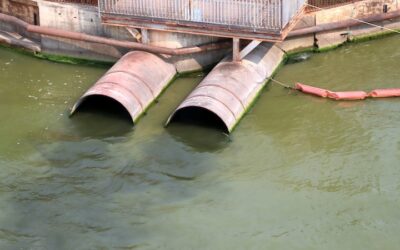This post was originally published on Eco Watch
The International Energy Agency (IEA)’s latest World Energy Outlook (WEO) describes the global energy system in 2030 as one in which clean energy technologies play an ever-increasing role.
The report says the future of global energy will include nearly 10 times more electric cars worldwide, solar generating more electricity, low-emissions energy sources supplying more than half of global electricity by 2030 and three times more investment in new offshore wind than in gas– and coal-fired power plants.
“In previous World Energy Outlooks, the IEA made it clear that the future of the global energy system is electric – and now it is visible to everyone,” said Fatih Birol, IEA’s executive director, in a news release from IEA. “In energy history, we’ve witnessed the Age of Coal and the Age of Oil – and we’re now moving at speed into the Age of Electricity, which will define the global energy system going forward and increasingly be based on clean sources of electricity.”
Global demand for electricity is rising faster than expected, making it more difficult for countries to reduce their carbon emissions.
“With higher energy use, even fast renewables growth doesn’t translate to fast falls in carbon-dioxide emissions,” said Dave Jones, energy think tank Ember’s global insight director, as The New York Times reported.
The latest edition of the WEO looks at how advancing clean energy transitions, emerging technologies, changing market trends, evolving geopolitical uncertainties and increasing climate crisis impacts are changing the meaning of secure energy systems, the press release said.
The new report highlights that current geopolitical fragmentation and tensions are creating significant risks for energy security and global action to reduce greenhouse gas emissions.
“The report underlines the inextricable links between risks of energy security and climate change. In many areas of the world, extreme weather events, intensified by decades of high emissions, are already posing profound challenges for the secure and reliable operation of energy systems, including increasingly severe heatwaves, droughts, floods and storms,” IEA emphasized.
The report found that, based on current policy settings, low-emissions energy sources are poised to provide more than half of global electricity before 2030, with demand for oil, gas and coal still predicted to peak by the end of the decade.
“In the second half of this decade, the prospect of more ample – or even surplus – supplies of oil and natural gas, depending on how geopolitical tensions evolve, would move us into a very different energy world from the one we have experienced in recent years during the global energy crisis,” Birol said in the press release. “It implies downward pressure on prices, providing some relief for consumers that have been hit hard by price spikes. The breathing space from fuel price pressures can provide policymakers with room to focus on stepping up investments in clean energy transitions and removing inefficient fossil fuel subsidies. This means government policies and consumer choices will have huge consequences for the future of the energy sector and for tackling climate change.”
The world’s energy system will become even more electrified in the face of soaring demand. In the last decade, electricity use has increased at two times the rate of overall energy demand, with two-thirds of the increase coming from China.
In its report, the IEA made it clear that, in order for clean energy to keep growing at pace, much more investment in energy systems — particularly energy storage and electricity grids — will be needed.
“Today, for every dollar spent on renewable power, 60 cents are spent on grids and storage, highlighting how essential supporting infrastructure is not keeping pace with clean energy transitions. Secure decarbonisation of the electricity sector requires investment in grids and storage to increase even more quickly than clean generation, and the investment ratio to rebalance to 1:1. Many power systems are currently vulnerable to an increase in extreme weather events, putting a premium on efforts to bolster their resilience and digital security,” the press release said.
The report said that, although global carbon emissions are on track for an imminent peak, the absence of a steep decline afterward means we are on course for a 2.4 degrees Celsius rise in the global average temperature by 2100 — well above the goal of limiting global heating to 1.5 degrees Celsius set by the Paris Agreement.
“The report makes clear: there is a narrow but achievable pathway to 1.5°C, but governments must put clear fossil fuel transition plans in place now,” said Tracy Carty, global climate politics expert with Greenpeace International, in a press release from Greenpeace. “The action we take in the next two years will shape how much climate-driven destruction we can avoid over the next two decades, and far beyond. Implementing the COP28 agreement to transition away from fossil fuels, embedded in clear Nationally Determined Contributions in alignment with 1.5°C, will be crucial to ensure any progress.”
The post World Is Moving From Coal and Oil to ‘Age of Electricity’ but Not Fast Enough: New IEA Report appeared first on EcoWatch.





0 Comments